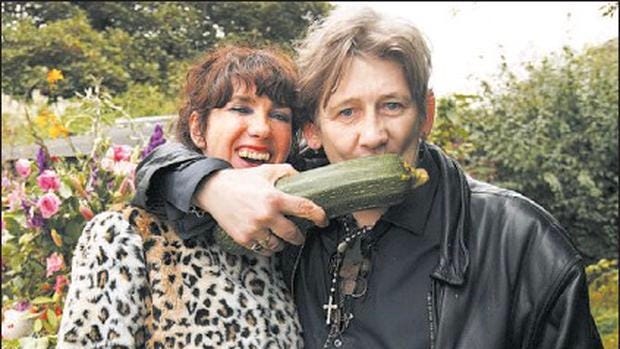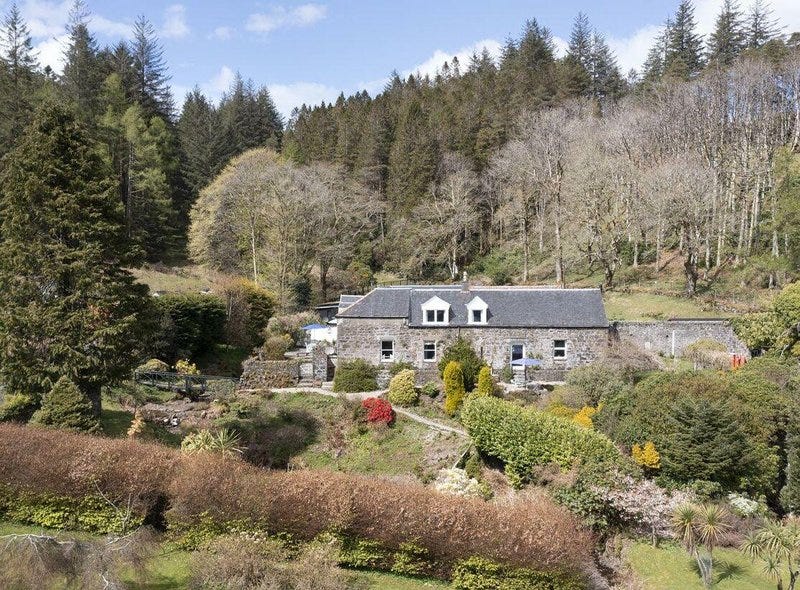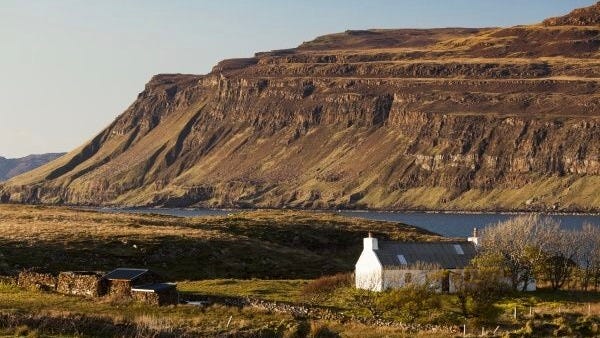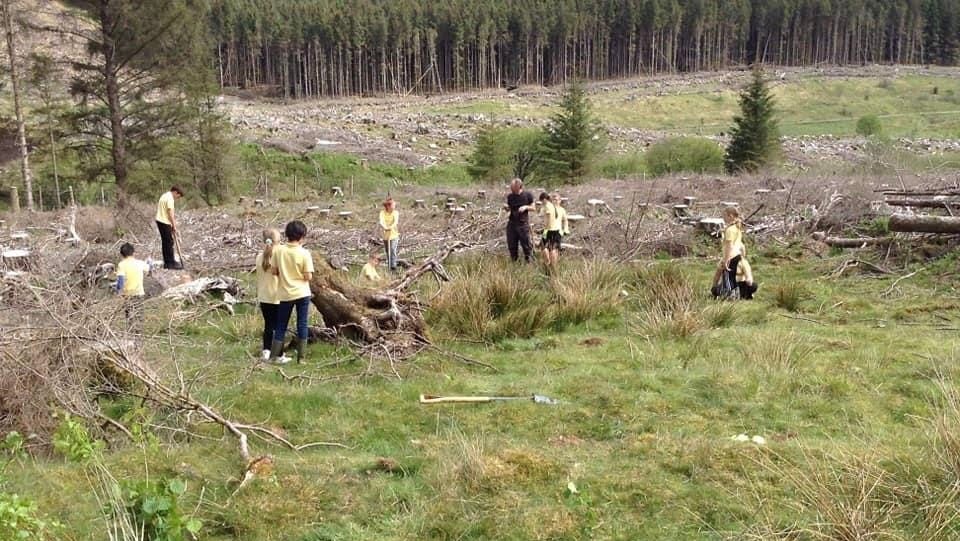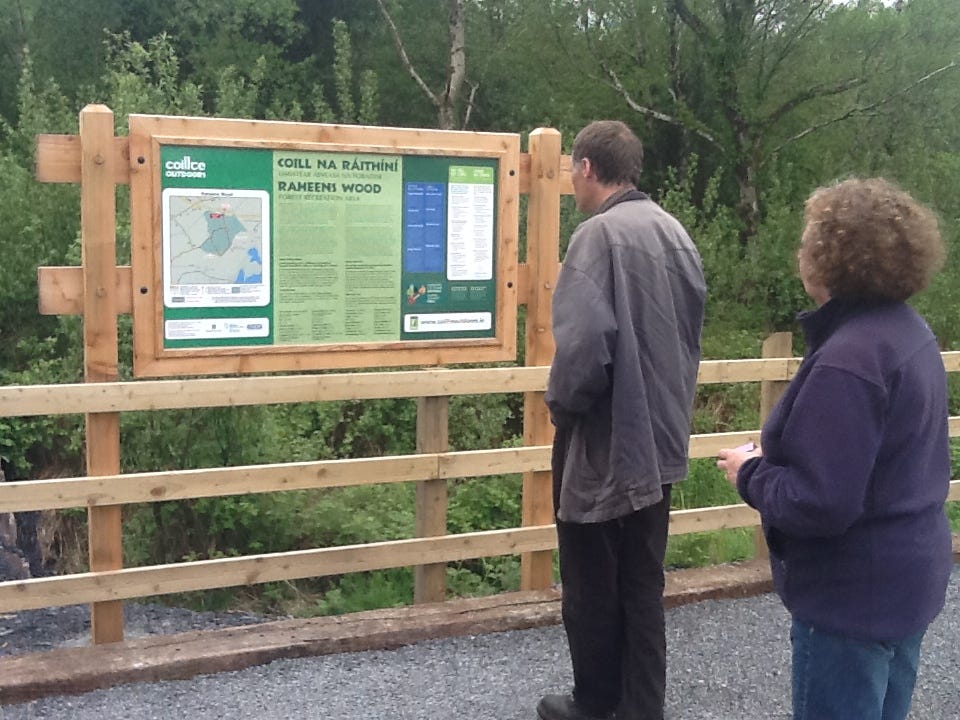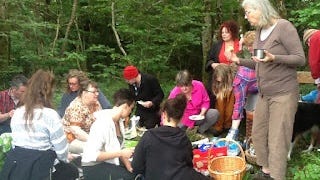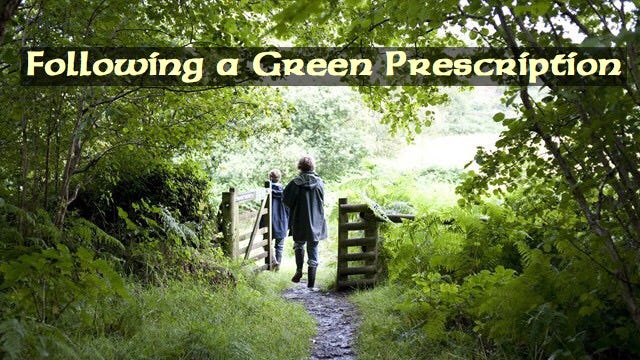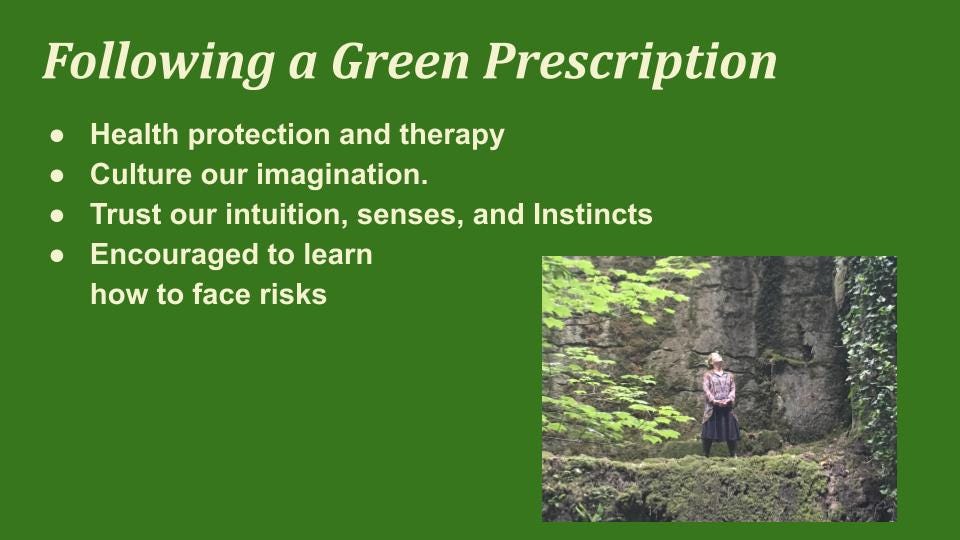Us And Trees - The Joy Of Local Woods
Us And Trees series part 2
Towards the end of Part 1, I started to suggest ways that local people can find land to return to woodland.
One of the most solid and secure ways to get your local woodland established is to purchase or rent local land to establish a long term arrangement.
This is a project that can be shared with a group of committed people to keep individual costs down,
Here is an idea I first noticed in Scotland, and this is coming together here in Ireland too. This idea is very similar to fruits and vegetable allotment sites, but this time for growing trees.
I watched an Irish documentary of private land in Co. Kildare where the owner rented out strips of land to people to enable them to grow their fruit and vegetables.
Two of the renters were popular Irish music makers Shane McGowan and Glen Hansard. This was before Shane had broken his hip, and the movie One with Glen Hansard had just been released.
Neither Shane or Glen looked after their plots very well through summer, though, for various reasons. But both of them turned up for the renter’s harvest gathering in Autumn :-)
At that gathering, Glen Hansard asked the land owner … “Can I just grow regular native trees here next year?”
Another ‘curator’ option is to form a ‘co-operative’ legally set up as a co-operative. The members of the co-operative buying or renting land together as equals. Also work the land together, maybe as a shared ‘tree sanctuary’.
One incredibly successful woodland co-operative that I am passionate about following is the ‘Tiroran Community Forest Woodland Co-operative’, at Tiroran, Isle Of Mull, Inner Hebrides, Argyll.
I once lived at Tiroran in what was once the Forestry Commission HQ there. That HQ was surrounded by mixed forestry, though there was a lot of larch and pine.
I left Tiroran and the Isle Of Mull to live in Caithness for study, but also became involved in campaigning for co-operative forestry legislation. I’m going to skip most of the political details and history of this, but the legislation was achieved and passed by 1990.
My involvement in the local forestry co-operative campaign was due to my own repulsion of Tree Plantation farming and how this stole land from local people. Sadly, this land seizing tree plantation corporation farming is happening around rural Ireland now.
What was later stunning to me was how people of SW Isle Of Mull copped onto this 1990 legislation 25 years later. Together, as equal share partners of a co-operative, they bought the forestry around Tiroran, which had gone up for sale, where I once lived.
To add to the co-incidences of this, one of the leaders that motivated this cooperative formation lives in an area on SW Mull called Ardtun.
This is where we raised our family. Ardtun is an amazing seaweed and seafood foraging area too.
Latest news from that Ardtun area is that crofters have now converted much of the land there into hazel orchards. When we raised our family there, the Ardtun area was amazing for foraging hazels from the abundant hazel hedges there.
Today at Tiroran Community Forest the plantation sections of larch and pine are being felled and the co-operative have a sawmills selling wood products from that harvest. There are also workshops where people learn to make an item of furniture in a day using traditional joints and no nails, screws, or brackets.
The cleared land is then being replanted with native trees, plus nature is free to establish its own trees such as birch trees in the wind, and eventually oaks from acorns buried by jays and red squirrels. Yes, more wildlife is returning to the forest such as nesting eagles.
All of the local schools are engaged in Forest School activities there, including their own tree saplings nurseries among their community gardens.
There are hiking trails now and beautiful retreat areas beside beautiful waterfalls. Social picnic areas too. A mountain bike trail is also being constructed.
The Tiroran Community Forest co-operative brings together Passion For Trees, and Woodland Forest Education. There is shared folklore among the practical deeds.
All together it is a local community owned woodland co-operative, saved from becoming an absent landlord commercial logging corporation. I hope this is a template of local woodland management that is often duplicated elsewhere.
Here’s one more opportunity that creates the possibility of becoming Woodland Curators. This is an Irish programme, but you may have something similar where you live if you do not live in Ireland. Here in Ireland it is called the ‘Community Neighbourwood Scheme’.
This has some similarities to a local community co-operative, but it is always open to the public. Well, the Tiroran Community Forest I mentioned is open to the public too. Part of the reason Tiroran Community Forest is public is due to Scotland’s excellent ‘right to roam’ laws.
The Community Neighbourwood schemes in Ireland are not entirely local community. They are local community in partnership with a commercial forestry company that manages the woodlands.
The community gets the use of the woods for their local leisure, green prescription, forest schooling, and other social and educational events. The caretaking forestry management company gets the profits from any tree thinnings harvested. Some of that profit may be cycled back into community events and education within the woodland, though.
In short, the local community gets to enjoy the fun and healthy stuff from the woodland but are not involved with most of the ‘business’ stuff.
Getting a Community Neighbourwood going was once very difficult, as the application form was barely understandable, and handled by a very bureaucratic office with the local council offices, and the woodland management handled by the state owned Coillte Forestry.
Now, at least in our area, everything is handled by the excellent Western Forestry Co-operative. They handle the application, additional grant applications, and eventually become the caretaker woodland managers. Western Forestry Co-operative also helps out a lot with setting up local woodland education too.
So to sum up those six choices of being a woodland curator
Your own garden or field
Help someone local with their own woodland, garden or field, in exchange for sanctuary use.
Get together with others to share buying or renting some unused land, public or private owned.
Rent a plot of your own from a local landowner with similar arrangements to garden allotments
Form and organised equal share co-operative to buy or long lease land and manage with equal shares
Create a neighbourwood where you get to do the fun events while a forestry company manages the woodland.
What about having a ‘Green Prescription’?
I mentioned in Part One that forest education and woodland creation is futile if we do not have a passionate connection to trees and woodland. One way to feel connection is to follow what some people describe as a ‘Green Prescription’
.To skim over what ‘Green Subscription' seems to be, it is a familiar experience for many people, but may need some reminding.
Breathing good air among the trees, especially the pinenes and similar from other evergreens. Our experiences among evergreens is enhanced by being among broadleaved trees, but I will not go into the science of that now.
We recognise physical health benefits from walking. Running is not needed, though some people love and prefer to run through the woods.
Mental health improvement, definitely. When we trust the woods it becomes our friend and companion. We become forest people who have found our forest again.
There is the modern widespread practice of Shinrin Yoku, mainly referred to as Forest Bathing these days. I think most people have grasped an interpretation of this, though most of what is practised around us is not the original Japan Shinrin Yoku ways.
Around Europe, Forest Bathing, it's really the practice of ‘mindfulness’ that was originally taught in forest bathing training schools in the USA, especially in California.
The forms of Forest Bathing offered here certainly includes prompts and exercises in being present, surrendering our egos, our fears, even our guilt and shame. Forest Bathing practices does help us to trust our senses, instincts and intuition.
Being in the woods as a sensory, open and mindful experience does culture our senses and imagination to make connections to our surroundings. Perhaps the greatest benefit is being in tune with what is around us, and this encourages us to take risks.
During Part Three of ‘Us And Trees’ we will explore sensory connection further and explore what ‘tree sanctuaries’ mean to us. I will also enter into trees and woodland folklore, including ‘tree spirits’ stories, and the ancient origins of phrases we use such as ‘knock on wood’.
It may be awhile before I get to Part Three, though, as I need to catch up on ‘Journaling Folklore’ course modules, plus a short series for Midsummer. After Midsummer I had better get going with the ‘First Harvest’ series as that is going to be several chapter articles loaded with folklore.
If you would like to join my 'Ogham Prompts' course? 20 optional modules a year, join in from any module any time as this is a cycle course, plus some meet-ups Please consider upgrading to monthly or very discounted annual subscription and get instant access to my 'Ogham Prompts' course modules. Subscribers will also receive enlarged versions of my free postings to include video clips and interviews where possible. I believe more value that a book, though I have books being put together too. All of my 20 Ogham Prompts are now linked up for easy reference in one place … gazetteer



